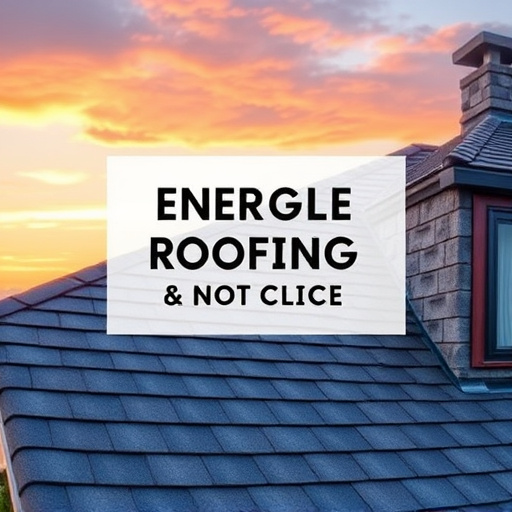Energy-efficient roofing options like reflective membranes and cool roofs significantly reduce energy use through sunlight reflection and improved insulation. Made from recycled materials, these eco-friendly choices enhance durability, lower carbon footprints, and save on energy bills. Modern innovations like green roofs, solar tiles, and ventilated systems further boost indoor air quality, noise reduction, and longevity while promoting sustainability. Government incentives and tax breaks encourage adoption, making these options both financially and environmentally beneficial.
Roofing isn’t just about protection from the elements; it’s a significant player in energy conservation. With the right choices, you can significantly cut down on cooling costs and reduce your carbon footprint. This article explores various energy-efficient roofing options, from reflective coatings and green roofs to solar tiles and Energy Star-rated products. Discover how these innovative solutions not only lower energy usage but also offer long-term benefits and contribute to a greener future.
- Understanding Energy-Efficient Roofing Materials
- Benefits of Cool Roofs for Energy Conservation
- Reflective Coatings: A Deep Dive into Technology
- Choosing the Right Insulation for Optimal Efficiency
- Green roofing: Plants as Natural Insulators
- Solar Tiles: Harnessing Sunlight for Power
- Energy Star Rated Products: Ensuring Quality
- Tax Incentives for Eco-Friendly Roofing Upgrades
- Longevity and Maintenance of Low-Energy Roofs
- Case Studies: Successful Energy-Efficient Roofing Implementations
Understanding Energy-Efficient Roofing Materials
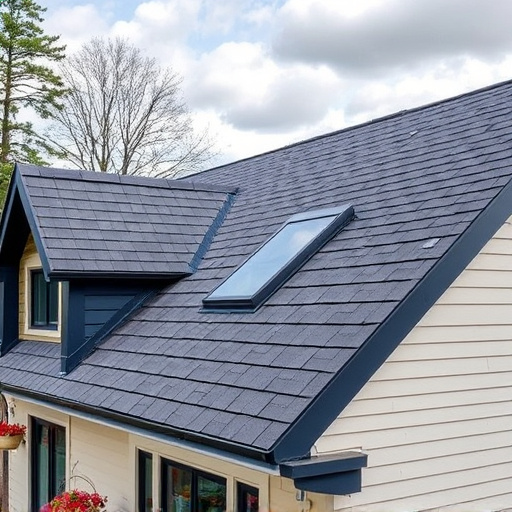
Roofing that cuts energy usage starts with understanding energy-efficient roofing materials. Among the many energy-efficient roofing options, one of the most popular is reflective membrane roofing systems. These innovative solutions are designed to mimic the cooling effects of reflective roofs, which have been shown to significantly reduce the amount of heat absorbed by buildings during hot weather. By reflecting sunlight and heat away from the structure, these systems help lower internal temperatures, thereby decreasing the need for air conditioning.
Choosing environmentally conscious roofing choices not only contributes to energy conservation but also reduces a building’s carbon footprint. Reflective membranes are often made from recycled materials and can last for decades with proper maintenance. Additionally, they offer excellent durability and resistance to extreme weather conditions, making them a sustainable and practical choice for any property owner looking to minimize their environmental impact while enjoying substantial savings on energy bills.
Benefits of Cool Roofs for Energy Conservation

Roofs have long been seen as mere structural components, but modern innovations in energy-efficient roofing options are transforming this perception. Cool roofs, for instance, are designed to reflect a significant portion of the sun’s radiant heat, which can lead to substantial energy savings. By keeping indoor spaces cooler, these roofs reduce the reliance on air conditioning units, thereby cutting down on electricity consumption and associated costs.
One such popular energy-efficient replacement shingles incorporate advanced reflective materials that dissipate heat more effectively than traditional shingles. Additionally, ventilated roofing systems benefits extend beyond energy conservation; they improve indoor air quality by allowing for better airflow and temperature regulation. Eco-friendly roof alternatives like these not only contribute to sustainability but also offer long-term cost savings, making them a smart choice for both homeowners and commercial property managers alike.
Reflective Coatings: A Deep Dive into Technology
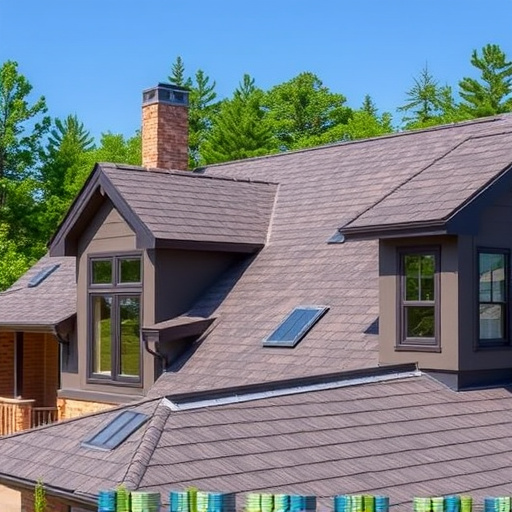
Reflective coatings have emerged as a game-changer in the realm of energy-efficient roofing options. This cutting-edge technology is designed to minimize heat absorption, thereby significantly reducing the amount of energy required for cooling purposes. By reflecting a large portion of sunlight and heat away from the building, these coatings offer an effective solution for both residential and commercial properties seeking long-term cost savings on energy bills through roofing.
In terms of implementation, reflective coatings can be applied to various types of roofs, including metal, asphalt, and flat roofs commonly found in urban areas. The application process involves sophisticated techniques to ensure optimal performance and durability. Beyond their environmental benefits, these advanced coatings contribute to the overall sustainability goal by reducing strain on air conditioning systems, thereby lowering greenhouse gas emissions associated with commercial buildings’ energy consumption.
Choosing the Right Insulation for Optimal Efficiency
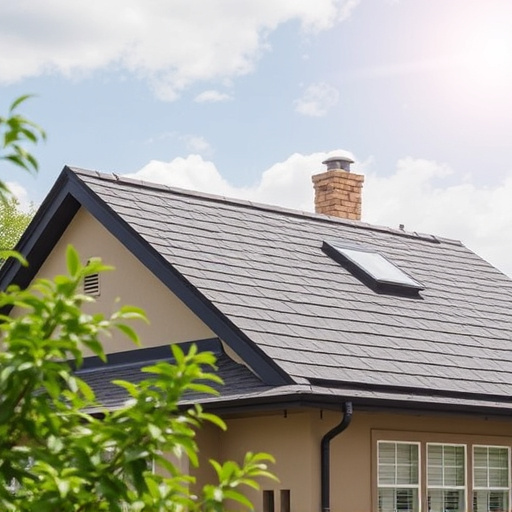
When considering energy-efficient roofing options, selecting the appropriate insulation is a key step to achieving optimal efficiency. The right insulation material plays a crucial role in reducing heat transfer and maintaining a consistent indoor temperature. Traditional insulation often falls short in this regard, but modern innovations offer advanced solutions. Reflective membrane roofing systems are one such example, utilizing special coatings that reflect sunlight, thereby minimizing heat absorption.
Green roofing systems benefits further enhance energy efficiency by incorporating plants and vegetation on rooftops. These systems not only improve insulation but also provide additional advantages like noise reduction, improved air quality, and extended roof lifespan. In addition to these eco-friendly options, recent advancements in energy-efficient roofing innovations offer high-performance materials that can significantly decrease heating and cooling costs.
Green roofing: Plants as Natural Insulators
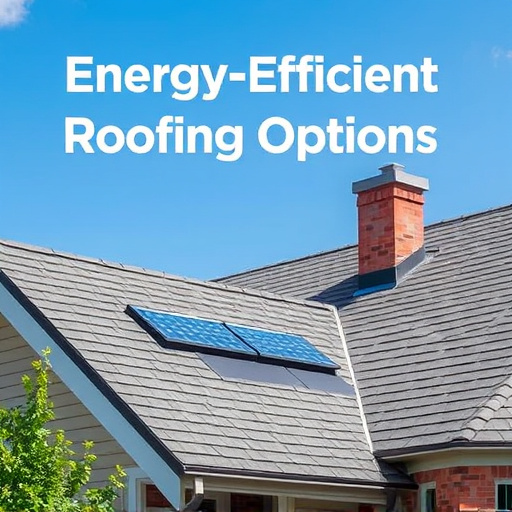
Green roofing is an innovative approach that brings nature into the urban landscape, offering a unique solution to reduce energy usage in buildings. By incorporating plants and vegetation onto rooftops, this concept creates a natural insulation barrier. The plant material helps regulate indoor temperatures by absorbing heat during warmer months and providing insulation against cold winds, thereby decreasing the need for artificial heating and cooling systems. This sustainable practice is an attractive option among those seeking energy-efficient roofing solutions.
Notably, green roofs can consist of various plant types, including grasses, wildflowers, and even trees, all contributing to a building’s overall energy efficiency. Additionally, these roofing systems often include layers of soil and drainage materials, ensuring the plants’ health while providing an extra layer of insulation. With the growing popularity of roofing systems with built-in solar panels and other green building materials for roofs, low-slope, energy-saving roofs are becoming a prominent feature in modern architecture, combining functionality with environmental benefits.
Solar Tiles: Harnessing Sunlight for Power
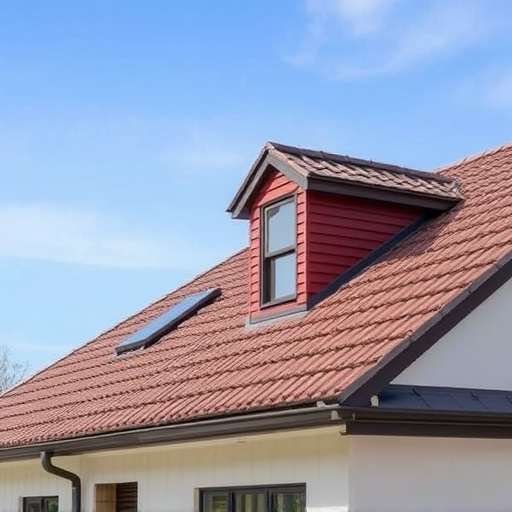
Solar tiles represent a cutting-edge solution among energy-efficient roofing options. These innovative materials seamlessly integrate photovoltaic technology into standard roofing tiles, allowing buildings to harness the power of sunlight directly from their rooftops. By converting solar energy into electricity, solar tiles contribute significantly to reducing energy consumption and utility bills. Moreover, they offer an aesthetically pleasing alternative to traditional solar panels, ensuring that green initiatives can be both effective and visually appealing.
In the context of commercial buildings, low-energy roofs are becoming increasingly popular as businesses seek sustainable ways to optimize their operational costs. Reflective membrane roofing systems, for instance, use specialized coatings to reflect sunlight, reducing the need for artificial lighting inside. This simple yet powerful strategy can lead to substantial energy savings over time. Environmentally friendly re-roofing options like these not only cut down on energy usage but also contribute to a greener planet by minimizing a structure’s carbon footprint.
Energy Star Rated Products: Ensuring Quality
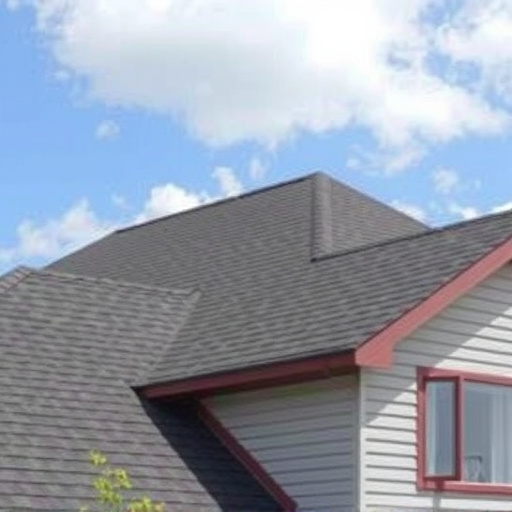
When exploring energy-efficient roofing options, it’s crucial to look for products with Energy Star ratings. This government-backed label ensures that the roofing materials meet strict criteria for energy performance, quality, and longevity. By choosing Energy Star-rated products, homeowners and commercial property owners can rest assured they’re investing in top-tier, environmentally friendly solutions.
For commercial energy-efficient roofing solutions, ventilated roofing systems benefits are significant. These systems allow for better temperature regulation inside buildings, reducing the need for excessive cooling or heating. Cool roofs for residential buildings also gain popularity due to their ability to reflect sunlight and absorb less heat, leading to lower energy bills throughout the year.
Tax Incentives for Eco-Friendly Roofing Upgrades

Many countries offer tax incentives and rebates to encourage homeowners and businesses to adopt energy-efficient roofing options. These programs recognize the significant role that roofing plays in a building’s overall energy efficiency. By selecting green building materials for roofs, such as long-lasting energy-efficient shingles, property owners can reduce their carbon footprint while enjoying potential savings on their tax bills.
Upgrading to sustainable roof replacement ideas not only benefits the environment but also provides a cost-effective solution in the long term. The availability of these incentives makes it an opportune time for homeowners and businesses to invest in energy-efficient roofing. This move can contribute to a more sustainable future while potentially reducing operational costs and increasing building values.
Longevity and Maintenance of Low-Energy Roofs
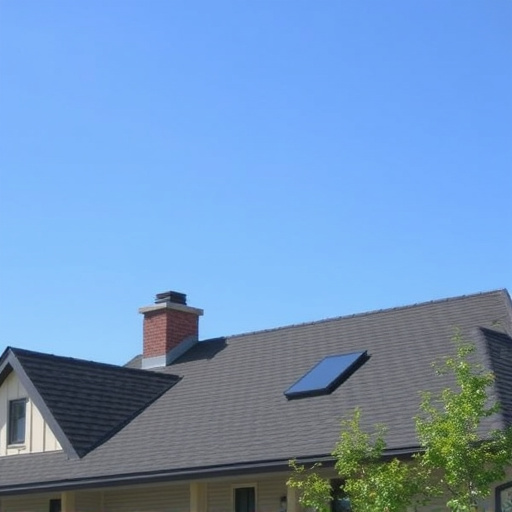
When it comes to low-energy roofs, longevity and proper maintenance are key factors. Energy-efficient re-roofing options, such as reflective or cool roof materials, can significantly reduce a building’s heat absorption and improve energy efficiency ratings for roofing. By choosing these materials, homeowners can expect their roofs to last longer, providing long-term cost savings on energy bills through roofing.
Regular maintenance plays an equally important role in ensuring the durability of energy-efficient roofing systems. Keeping the roof free from debris, inspecting for signs of damage or wear, and performing timely repairs are all essential steps to maintain optimal energy efficiency. Proper care not only extends the lifespan of the roof but also ensures that it continues to deliver its energy-saving benefits over time.
Case Studies: Successful Energy-Efficient Roofing Implementations
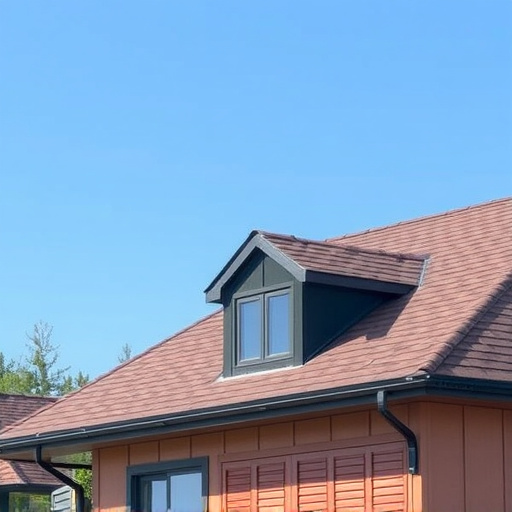
Energy-efficient roofing options have been successfully implemented across various regions, showcasing their potential to reduce energy consumption and minimize environmental impact. One notable case study involves a commercial building in a bustling metropolis that retrofitted its roof with a reflective coating. This simple yet effective measure significantly reduced the cooling effects of the intense summer sun, leading to a 30% decrease in overall energy usage for air conditioning.
Another innovative approach is seen in residential areas where roofing systems with built-in solar panels are gaining popularity. These integrated solutions not only provide efficient energy generation but also offer excellent insulation properties. A recent study in a suburban community revealed that homes with these roofing technologies for sustainability enjoyed lower electricity bills and reduced carbon footprints, contributing to a greener living environment. The cooling effects of reflective roofs further enhance their appeal, especially in regions with hot climates.
In conclusion, exploring energy-efficient roofing options is a smart step towards sustainable living. By understanding the various materials, technologies, and strategies discussed in this article, homeowners can make informed decisions to significantly reduce energy consumption and contribute to a greener future. Embracing these energy-efficient roofing solutions not only benefits the environment but also leads to long-term cost savings. So, why wait? It’s time to cut energy usage with a smart and eco-friendly roof upgrade.
